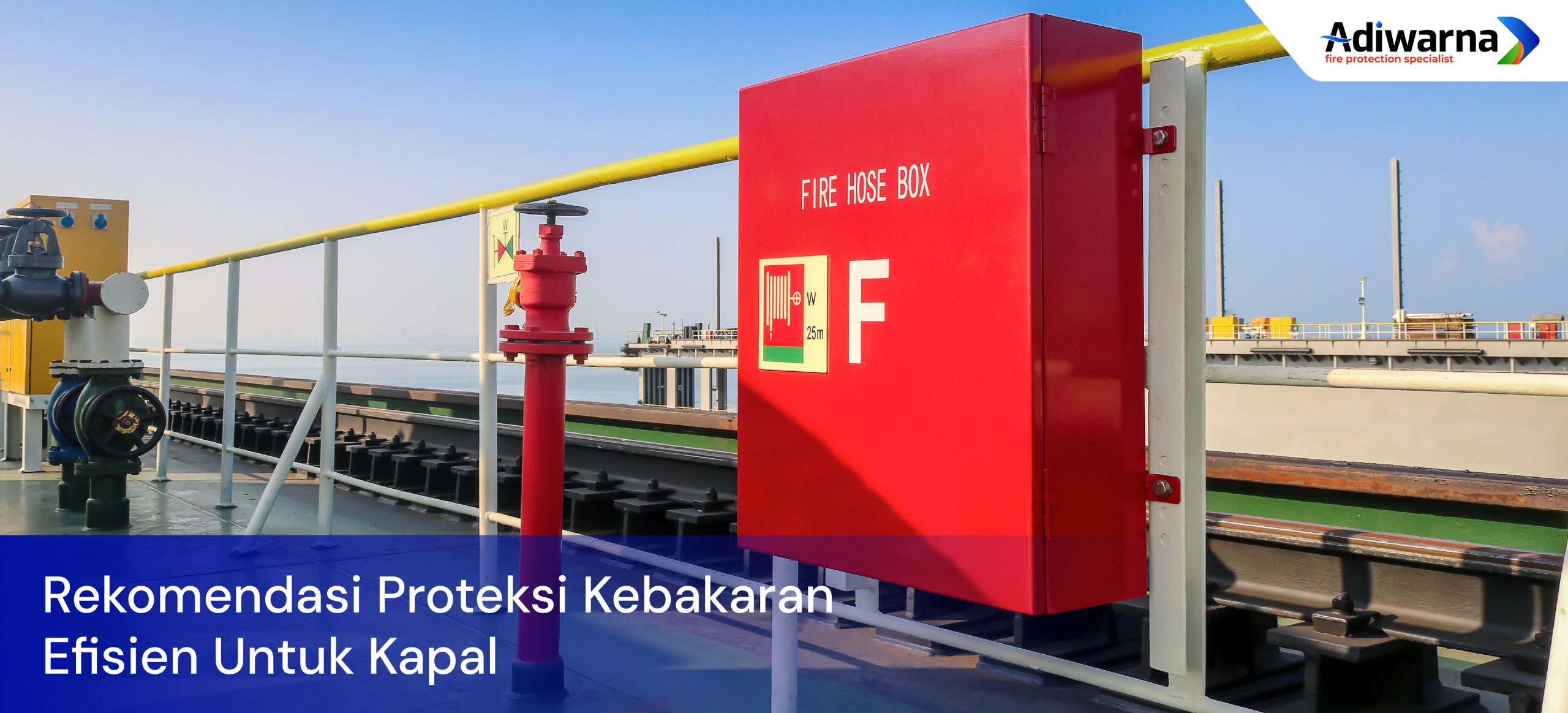As sea transportation develops in Indonesia, stricter protection is also needed to avoid unexpected incidents, including fire protection. Where fire protection can prevent fires / explosions on ships, citing data from the KNKT (National Transportation Safety Committee) that fire incidents on ships occur around 35% of other accident incidents.
Please note that fire protection systems on ships require several recommended specifications. And based on the laying of the system, the marine fire extinguishing system is divided into two, namely:
- Active Fire System: is a shipboard fire extinguishing system that focuses on the placement of fire extinguishers, as well as how to use them. This system requires everyone on board to be involved in fighting fires.
- Passive Fire System: is a system in the form of rules or socialization of the application of fire extinguishing systems, as well as the use of fire extinguishers. This system also contains how to install fire extinguisher installations in areas prone to fire.
Ship Fire Protection System
The following is an efficient system used to protect ships from fire incidents:
Ships Hydrant
One of the most vital system support tools is the ship hydrant. It is said to be vital because this tool can help the fire fighting system in extinguishing large-scale fires.
The function and distribution of water on a ship hydrant is the same as a building hydrant. Only the type of water used is different. Unlike building hydrants, the water used in ship hydrants is sea water.
Unlike building hydrants, ship hydrants have their own components. These components are:
Engine Room: is a component that functions as a nesting place for the machines that move the ship’s hydrant. This component has three other components in it, namely the generator, main pump, and control panel.
Self-Priming Sewage Pump: is a water pumping device on the ship’s hydrant. This component can be operated by electricity or diesel power.
Fire Water Monitor: a component that connects the ship’s hydrant with external components on the hydrant. Such as hoses or other similar tools.
Hose Reel: a storage place for hoses, an external component that can flow water to the area of the fire.
Sewage: a component used to collect seawater. As previously explained, if the ship’s hydrant uses sea water as its mainstay.
ship-specific fire hydrant
This is another tool that is quite vital. Like fire extinguishers in buildings, fire extinguishers on ships are also divided into various types. These types are formed based on what media is in the fire extinguisher.
The types of fire extinguishers that we mean are:
Fire Extinguisher Dry Chemical Powder
Is a fire extinguisher whose contents are dry chemical powder. This tool is commonly used in class C fires that hit the ship. Especially, if the fire is caused by electrical problems. This tool is suitable for installation in any part of the ship. Starting from the dining area to the fuel storage room.
Foam extinguisher
This foam fire extinguisher is suitable for extinguishing class B fires on ships. Especially, those caused by flammable liquid objects. Oil for example. Therefore, foam fire extinguisher is highly recommended to be stored in the fuel storage section. Because, as we know, there is ship fuel in the form of sulfur which is prone to burning.
CO2 Fire Suppression System
Installation of CO2 Fire suppression System for Fire Protection of Ship Engine Room is very important considering the risk of fire in the ship engine room is very large.
The selection of the CO2 Fire Suppression System fire extinguishing system for the Ship Engine Room is very appropriate considering that the CO2 system is able to extinguish the fire effectively in the ship’s engine room which has characteristics that match class B fires, namely the type of fire caused by flammable liquid fuels or gases. With the total flooding CO2 fire suppression system method, the ship’s engine room can be protected from fire hazards in an automatic way, especially fire prevention efforts with a fire early warning system (fire alarm system) integrated with the CO2 System.

